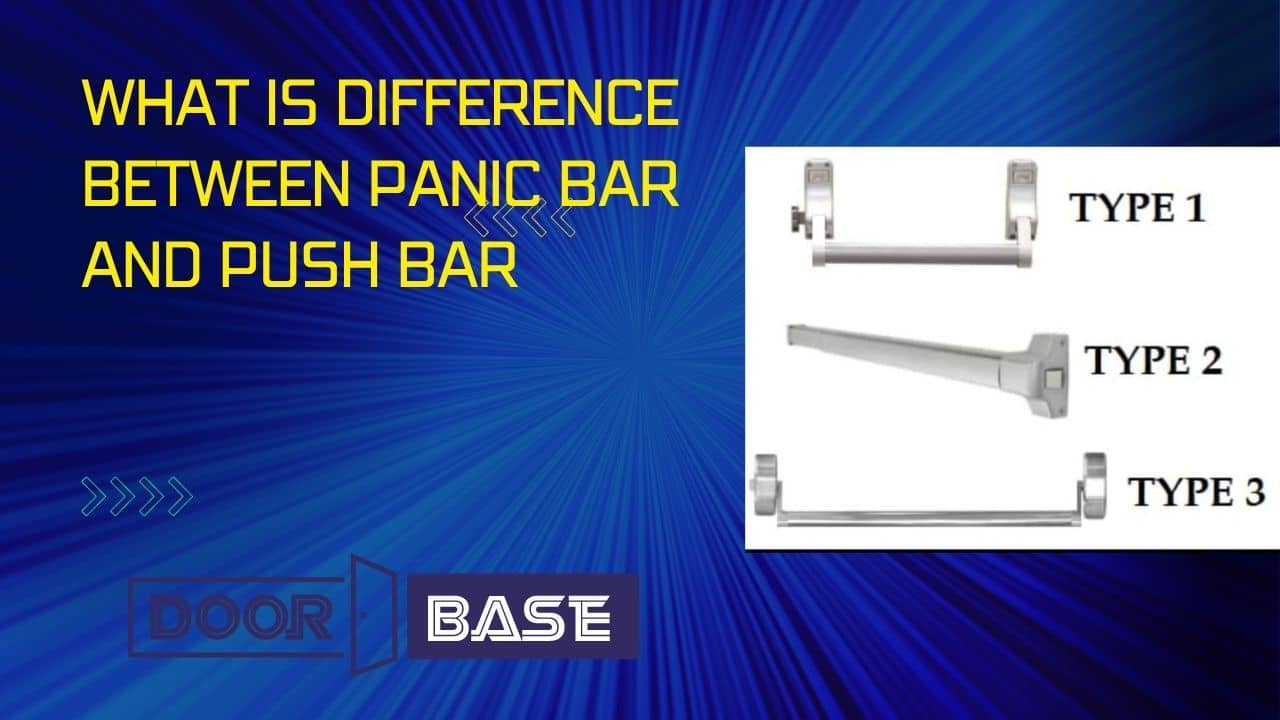
What is difference between panic bar and push bar
BySubhash Kumar
A panic bar and a push bar are both types of door hardware that are commonly used in commercial and public buildings. They are designed to provide a safe and quick exit in emergency situations, but they differ in their specific features and intended use. In this article, we will explore the differences between panic bars and push bars, how they work, and their unique features.
What is a Panic Bar?
A panic bar, also known as a crash bar or an exit device, is a door hardware device that is designed to be used in emergency situations. It is typically installed on the inside of a door and is used to provide a quick and easy exit in the event of an emergency such as a fire or other disaster. Panic bars are commanly used in buildings such as schools, hospitals, hotels, and other public spaces.
The main feature of a panic bar is that it is easy to activate from the inside of the building. A person can push on the bar, and the door will immediately open, allowing for a quick and safe exit. Panic bars are typically required by building codes and regulations to ensure that buildings are safe for occupants in emergency situations.
One of the most significant advantages of a panic bar is that it is easy to use, even by people who are not familiar with the building. In a panic situation, people tend to be disoriented and confused, and the last thing they need is to struggle with a complicated door mechanism. Panic bars ensure that anyone can exit the building safely and quickly, without the need for special knowledge or training.
Another advantage of a panic bar is that it can be locked from the outside, preventing unauthorized entry into the building. Panic bars are typically designed to be difficult to tamper with, ensuring that only authorized personnel can gain access to the building.
What is a Push Bar?
A push bar is another type of door hardware device that is commonly used in commercial and public buildings. Like panic bars, push bars are designed to provide a safe and easy exit in emergency situations. However, push bars are typically used in less critical areas of a building, where safety and security are not the primary concern.
The main feature of a push bar is that it requires a deliberate push to activate. Push bars are often used in areas such as conference rooms or private offices, where security is a concern, but safety is not as critical. Push bars are typically easier to use than conventional doorknobs, but they require more effort to open than panic bars.
Push bars are available in a variety of styles and designs, including surface-mounted, concealed, and mortise-mounted. They can also be equipped with optional features such as key locks, alarms, and delayed exit systems.
Differences between Panic Bars and Push Bars
The main difference between panic bars and push bars is the way they are activated. Panic bars are designed to be easily activated in emergency situations, allowing for a quick and safe exit from the building. Push bars, on the other hand, require a deliberate push to activate, making them more suitable for areas where safety is not as critical.
Another difference between panic bars and push bars is the level of security they provide. Panic bars are typically more secure than push bars, as they are more difficult to tamper with and can be locked from the outside. Push bars are designed to provide a basic level of security but are not as robust as panic bars.
Panic bars are also more likely to be required by building codes and regulations, as they are designed to ensure the safety of occupants in emergency situations. Push bars may be required in some areas, but they are not typically required in the same way that panic bars are.
Installation Considerations
When choosing between panic bars and push bars, there are several installation considerations to take into account. The type of door, the location of the door.For more blog click on
Subscribe for discounts and offers